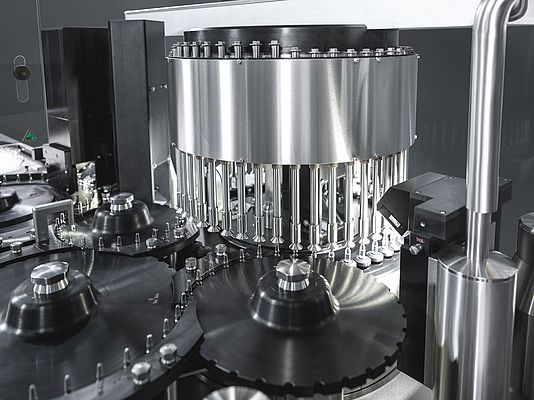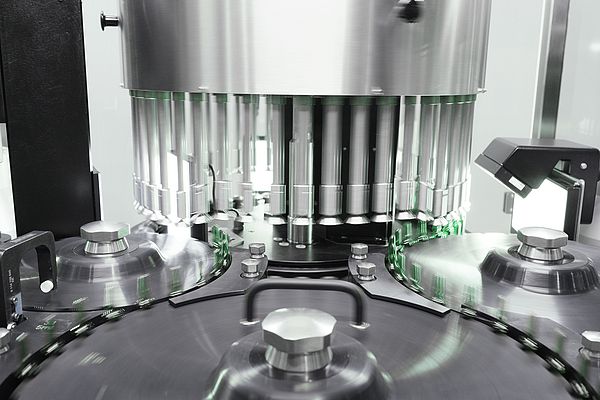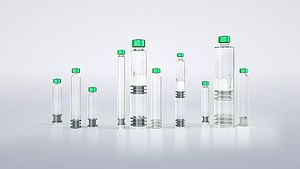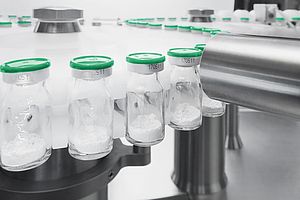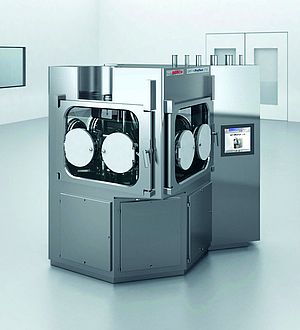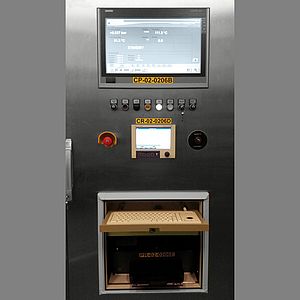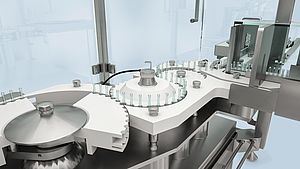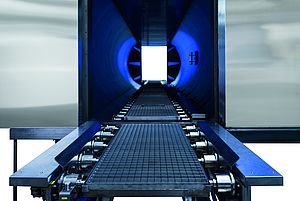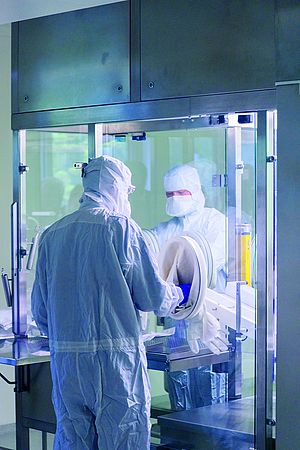Against the background of rising complexity in products and requirements, the pharmaceutical manufacturer CDM Lavoisier decided to fully automate its inspection process for injectable glass ampoules. Since 1888, CDM Lavoisier has operated as a family-owned business and is a leader in the manufacturing of injectable drugs. “Since the beginning, we have developed products according to the needs of healthcare professionals and sick people. We are committed to top quality for the safety and efficiency of our products. It is with this state of mind that we regularly develop new packaging and formulas,” says Philippe Truelle, CEO of CDM Lavoisier in the company’s mission statement.
And they not only develop new technologies; they also adopt them. After very positive experience with several inspection machines and further filling and packaging technologies from Syntegon Technology (formerly Bosch Packaging Technology), the company decided to rely on a new, fully automated solution from the long-term partner. “The AIM 3000 is a new-generation, high-speed machine which has the capacity to detect very small particles and a wide range of cosmetic defects,” says Mr. Truelle.
ENSURING PROCESS CONSISTENCY, SPEED AND COST EFFECTIVENESS
To date, the pharmaceutical manufacturer had been working with a combination of automated and manual inspection. Accordingly, one of the requirements of the new system was its capability to execute the previous manual inspection steps fully automatically, i.e. cosmetic defects like the so-called black spots originating from the ampoule closing process, as well as non-moving particles within the containers. “Fully automated visual inspection offers several advantages, such as process consistency, speed and cost effectiveness,” says Mr. Truelle. “Nevertheless, the main challenge was to optimize particle detection rates and reduce false reject rates within the system.” Since many different parameters such as viscosity, density, fill volumes or the presence of bubbles can affect process performance, it was crucial to evaluate the performance of the system based on a wide range of process parameters and solution properties in order to qualify a robust and consistent visual inspection process. Once this challenge was overcome, a large variety of inspection recipes had to be implemented and fast changeovers ensured for some 30 different products in four packaging formats.
AIM 3000: COMPACT PLATFORM FOR VISUAL INSPECTION AND LEAK DETECTION
The first model of the AIM series was developed by Eisai Machinery some 40 years ago. In 1985, the successful KLD series using high-voltage leak detection (HVLD) was introduced by Bosch Packaging Technology. It detects leaks by measuring the electrical resistance of containers with conductive solutions. Today, both technologies are an integral part of Syntegon Technology’s inspection portfolio, and the AIM 3000 combines both further developed visual inspection from the original AIM series and HVLD from the KLD series. The new platform inspects ampoules and vials containing solutions and suspensions at an output of up to 450 containers per minute.
To sort out damaged containers before they enter the main inspection turret, the AIM 3000 is equipped with a pre-inspection station. The core module features a high-resolution CMOS camera with high-speed interface for particle and cosmetic inspection, as well as a built-in re-inspection function. The customizable platform can be retrofitted on site to add further visual inspection stations or the HVLD module – which is exactly what CDM Lavoisier opted for. “The AIM 3000 not only offers us high speed, but also a reduced footprint thanks to its integrated HVLD module,” Philippe Truelle underlines. Moreover, it equips CDM Lavoisier for the current and upcoming requirements of EU GMP Annex 1.
TECHNOLOGY AND PROJECT MILESTONES
For Philippe Truelle, the highlights of the new technology are obvious: “First, the HVLD module really works for all products, including Water for Injection (WFI). And second, the mechanical aspect of the equipment leads to significantly reduced glass breakage rates during the process.” Syntegon’s transportation technology relies on the Bernoulli principle instead of transporting containers via a star wheel using vacuum grippers. This principle allows for contactless handling of glass containers without mechanical stress. In the unlikely event of glass breakage, no glass splinters will be sucked into format parts or the pneumatic system.
Despite all the sophisticated technology, several steps were required to implement the AIM 3000 with the ideal settings for CDM Lavoisier. “The Syntegon team tackled each challenge. It was a real partnership between our two companies,” says Mr. Truelle. The first major milestone consisted in selecting good and bad samples for each of the 30 plus products. The Syntegon inspection experts tested all of them offline and developed the suitable inspection recipes. Then came the machine layout validation, the Factory Acceptance Test (FAT) in Germany, followed by the re-installation and machine instruction training at the CDM site in France, including Installation and Operational Qualification (IQ/OQ). “Finally, it was time to see whether the new equipment really is more efficient and effective than the previous combination of automated and manual inspection,” Mr. Truelle recalls.
COMPREHENSIVE INSPECTION ENABLES END-TO-END QUALITY CONTROL
For CDM, the AIM 3000 project not only had a positive outcome on the efficiency of inspection processes. Another important optimization was related to the previous manufacturing steps. “The more sensitive and sophisticated the inspection process, the more you learn about your prior production processes,” Mr. Truelle explains. “Thanks to the information we obtained from the AIM 3000, we were able to systematically identify and adapt crucial sections within our filling and sealing processes, to make them more stable and to reduce the number of unnecessary rejects even further. In fact, our performance is increasing from week to week.”
CDM Lavoisier has successfully managed the technology shift in its inspection of glass ampoules. “We are still in a continuous improvement process. But we can definitely confirm that the Syntegon inspection technology and the entire AIM 3000 project has led to major improvements. After 25 years of successful cooperation, we were already familiar with the professional and future-oriented working methods. This very demanding project with its thorough project management and efficiency has once again convinced us of their qualities as a reliable partner,” Philippe Truelle concludes.


